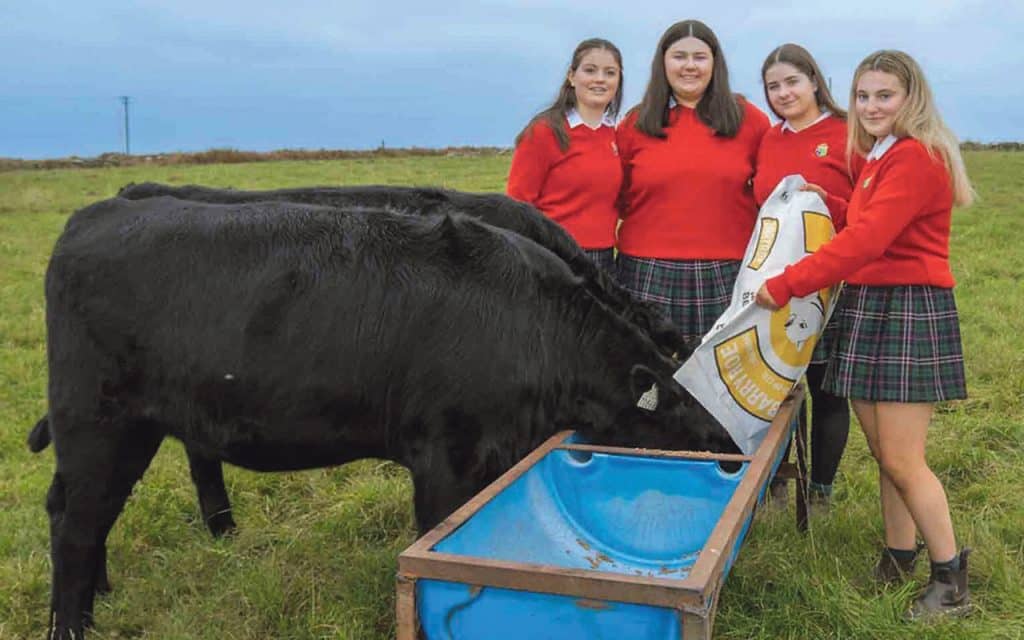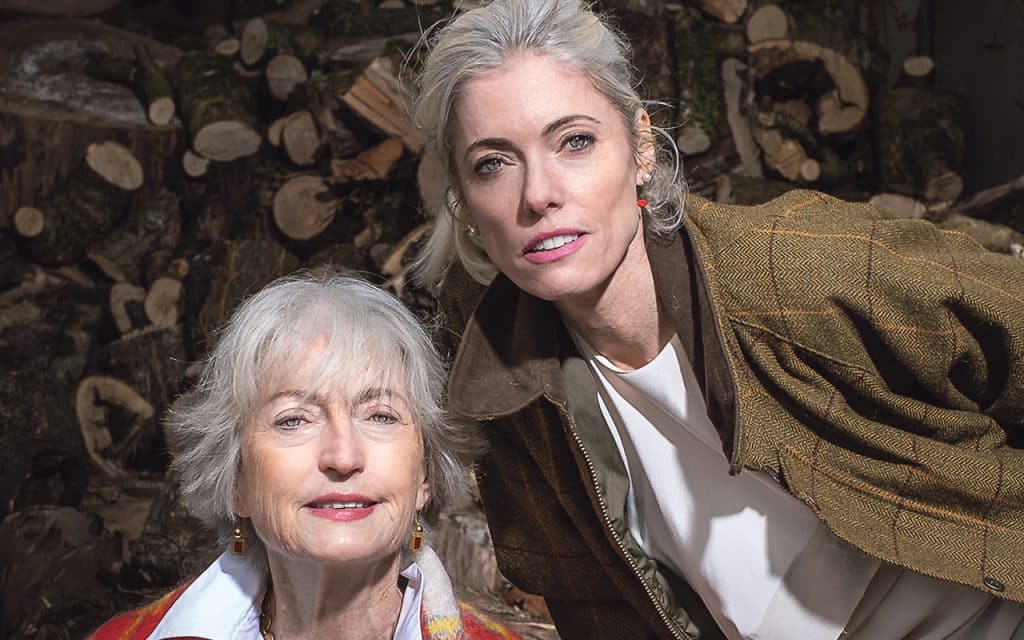Sacred Heart Secondary School, finalists in the Certified Irish Angus Schools Competition

Four students from Sacred Heart Secondary School, Clonakilty are presently finalists in the Certified Irish Angus Schools Competition. Lucy Kirby, Ciara O’Driscoll, Ellen O’Neill and Niamh O’Sullivan, with the guidance of their teacher Mary O’Riordan, give a run down to Tommy Moyles on what is involved in the competition and what they’ve been up to.
What does the Angus schools competition involve? Why did you decide to do it?
The Certified Irish Angus Schools Competition aims to promote the Certified Irish Angus Brand while educating students about the care and attention required to produce quality beef for consumers. It is run with partners ABP and Kepak.
Our school has a tradition of entering the Certified Irish Angus Schools Competition and was the first winner of the competition. Past groups shared their experiences with us and really inspired us to enter the competition. We all have a huge interest in farming and all come from dairy farming backgrounds. We were aware of the Angus breed from our farming experience and knew that they were a traditional beef cattle breed that produces beef of the highest quality. We wanted to enter the competition to be given the opportunity to promote the Irish Angus breed to both the farmer and the consumer. We thought it would allow us to broaden our knowledge of possible careers in the agricultural industry and develop our teamwork, communication and interpersonal skills.
As well as rearing the cattle, what else have you been up to as part of the competition?
We designed a mascot to promote the Certified Irish Angus Brand. This mascot is named Éire, the Angus, and is an educational tool. It makes a strong first impression, grabs attention, and is memorable. We use it to highlight eight important traits of Certified Angus Beef products. The grass that Éire is standing on highlights that Angus cattle have a grass-based diet, a plentiful food source that reduces their environmental impact. Éire’s black hair is a key recognisable feature of the Angus breed. We also use it to highlight the fact that the meat is flavoursome and tender.
In order to promote the Certified Irish Angus Brand to our school community we had a naming competition for the calves; we brought them to school for our Trade Fair Showcase and have also had a cook-off and a beef tasting session.
Over the course of the last twelve months, we have taken advantage of many opportunities to interact with farmers and highlight how the use of DBI for sire selection can generate better CBV calves. We created a breeding checklist for dairy farmers and buying checklists for beef farmers and we showcased these at the Skibbereen Fat Stock Show and Sale. We have attended many farm walks and events including the Carbery Farmer Welfare Conference and Bandon Co-op Dairy Beef Integration Project.
We recently organised a gala dinner ‘A Taste of Certified Irish Angus’ in Fernhill House Hotel. This event had a dual purpose; to raise awareness of the Certified Irish Angus Brand and to raise funds for Cancer Connect, a charity that co-ordinates transport to Cork hospitals for cancer patients, and we were delighted to raise over €2000. There were over 150 people in attendance. Guest speakers on the night linking with our project aims included yourself, John Appelbe, Diarmuid Kelleher of ABP and Brendan Scully and Bandon Co-Op.
You recently were on a trip with the other teams involved. Where did you go and what were the stand out things learned?
On March 24-28, we went on a study trip with the four other finalist groups in the competition. This study trip allowed us to explore every stage of the agri-food supply chain. It began in Dublin, where we gained valuable insights at Tesco Ireland Headquarters, gaining an understanding of retail and consumer trends; Bord Bia where we learned about food branding and global positioning; and Airfied Estate, where we saw sustainable farming in action. The following day we went to Hilton Foods where we witnessed beef processing at scale; Lismullin Cookery School where we had a steak challenge and learned how to cook the ‘perfect’ steak; and in Teagasc Grange we got a glimpse of research and genetics up close particularly in relation to the Dairy Beef sector.
The next step of the trip was Brussels, where we presented our project in the European Parliament to MEP’s Billy Kelleher and Barry Cowen. We also met with Noel Banville of IFA which deepened our understanding of agri-politics.
Was there anything in particular that surprised you as part of this?
The whole study trip really broadened our understanding of the agricultural industry and opened our eyes to future careers in the agri-food industry. From our trip, our knowledge of the farm to fork process in the food industry was expanded. It further developed our knowledge and allowed us to greatly appreciate the dedication from the farmers, as well as the expert processing plants and packaging companies.
Hilton Foods really inspired us and gave us a great awareness of all that’s involved in their company. For example, we learned that it takes 32 months for a steak to be stocked on a shelf, by the time the animal has been raised and slaughtered, and the meat has been matured and packaged. This further increased our knowledge, as we had a visit to ABP Bandon prior to the study trip, and we are hoping to go for a visit to Kepak Watergrasshill, another one of Certified Irish Anguses processing partners.



